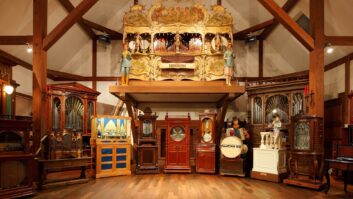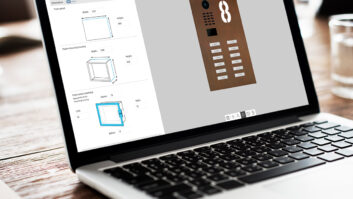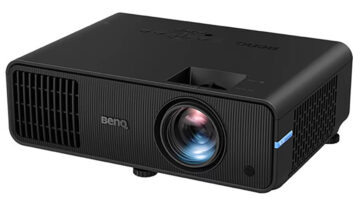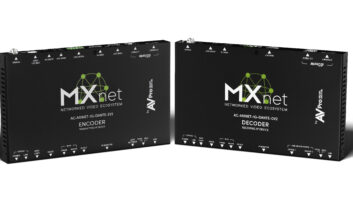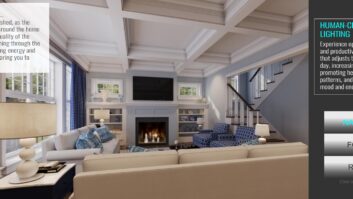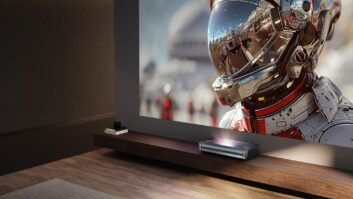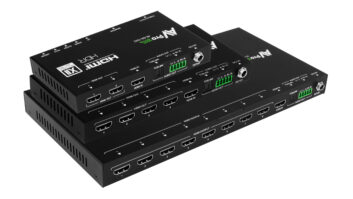At the end of September 2010, JVC will hold its annual pre-CEDIA EXPO press conference, where everything from headphones to high-end D-ILA projectors will be unveiled. RS didn’t get the scoop on these new products yet, but we able to chat with Gary Klasmeier, product engineering manager, D-ILA Systems, JVC Professional Products, about other fun topics like native contrast ratio, 3D, and D-ILA, of course.

Gary Klasmeier, JVC
From JVC’s perspective, how important is contrast ratio in a video projector, particularly in a home theater?
Contrast ratio is very important to simulate the look of film in a home theater. This becomes especially important when the theater has controlled lighting and very low off-state black levels can be seen. But what I really think is important in a projector is “native contrast ratio.” Native means the sequential contrast ratio number is not enhanced by means of electronic circuitry or a dynamic iris, both of which artificially make the number higher but do not produce a consistent dynamic range in every frame of a movie being played back in your theater. This means that frames with peak whites and deep blacks are not reproduced faithfully – they can appear dull compared to our D-ILA projectors, which deliver true native contrast ratio of 60,000:1 or higher. There are many high numbers stated for contrast ratio these days, but question people should ask is, “What is the native contrast ratio?”
What makes D-ILA different from other projector technologies?
The primary use of a projector in a home theater is watching movies. D-ILA technology reproduces the smooth, properly saturated, high resolution, and high contrast look of film quite faithfully. Because there are no moving mirrors or color wheels, and all of our projectors use three individual imaging devices, the images produced emulate the look of film naturally. As in film, each frame has all colors projected at the same time with full dynamic range. The image is virtually free of pixel structure, as nearly two million individual pixels are packed tightly together on the 0.7” diagonal D-ILA imaging device. The image is very easy on the eyes and can be viewed for hours at a time without eye fatigue. The viewing experience on D-ILA projectors is extremely comfortable; you end up watching the movie, not the technology.
These same attributes are the reason D-ILA technology is chosen in mission critical applications such as flight simulation and training. Pilots train for hours – in order to be fully immersed in the training exercise, the image being viewed needs to be as realistic as possible. D-ILA technology is a superb imaging engine and enables this immersive experience.
JVC’s DLA-RS35 Reference Series home cinema projector offers a native contrast ratio of 70,000:1.
How is JVC supporting the move toward 3D, specifically in the CEDIA channel? (In what ways in the channel either ready for the technology or in need of further education?)
It seems as if 3D had been talked about for decades, and then, at CES 2010, the avalanche of 3D was upon us. We have progressed through so many formats (VHS, DVD, Blu-ray, etc.) and aspect ratios (4:3, 16:9, and anamorphic 2.35:1), as well as a myriad of technologies behind the scenes. All of these started at varying states of confusion and quality. 3D can add another level to the home viewing experience, but in terms of the CEDIA channel we are at the beginning. There are new HDMI standards and a host of 3D formats to learn. Plus, the source hardware is changing again and there are several types of 3D solutions for flat panel and projection to understand.
In addition, there is still a need for a variety of “good” 3D content. The quality of 3D content is likely to vary for a while, similar to what we saw when DVD first arrived. Some DVD transfers were excellent, but many were just average quality. 3D represents another level of technical and production artistic choices/challenges. I am sure that most everyone has experienced very good 3D and just “OK” 3D at the movie theater by now. At a recent training session at Infocomm 2010, we were told that 3D television production truck construction, signal delivery tradeoffs, and even 3D production monitoring during acquisition of events is still being fine tuned. Yes, we will see 3D television channels, but until the process gets perfected, there will be varying levels of performance.
I believe that at CEDIA 2010 there will be equipment available as well as some content. Dealers and customers need to understand that 3D is different than 2D in many ways. The image brightness level at home, just as in movie theaters, will be lower on 3D presentations than 2D. Most likely the resolution of the image will be lower on 3D than 2D. This is not to say this is bad; it’s just different, so an education process needs to take place at the dealer and customer level to understand the correct expectations of what is possible with the current 3D systems. I think the need for further education is paramount to completely sort out the details of 3D.


The DLA-RS4000 Reference Series 4K home cinema projector produces high contrast images with four times the resolution of full HD.
Anecdotally, how would you describe the acceptance level of anamorphic lenses in the CEDIA channel?
JVC has been in a continuous training mode explaining the benefits, installation methods, and alignment of anamorphic systems for several years. The installation of an anamorphic system with motorized lens and screen masking is very complex and can be very costly. Attendees of our training sessions are very interested in the process, as they actually get to work with the components of the anamorphic system. Each training session seems to initiate some anamorphic projects, but it seems more the exception than the rule. I have to say that experiencing the anamorphic system can be very dramatic. Beginning with a 16:9 image and then switching to anamorphic mode, opening the masking to reveal a wider screen, has a lot of “wow” factor.
Please explain 2K vs. 4K and what the reality might be for actual products for the CEDIA channel.
There are currently a number of 2K resolution product offerings in the market. I have been watching movies on our 2K D-ILA projectors for several years, and I still think the image quality is amazing. 2K is a great platform, but I have had some interesting 4K experiences as well.
JVC recently hosted a THX Video Calibration certification event. Most of the calibrators in the session had in-depth experience of flat screen and projection imaging. Over three days, students worked with a variety of panels and projectors to learn theory and calibration techniques. One evening, we set up JVC’s RS4000 Home Cinema System and let the class observe native 4K images. We played back a variety of content, including 4096 x 2400 resolution digital photographs, 4K video captured in Okinawa from JVC’s 4K camera, along with BD titles scaled to 4K on an 18-foot wide image.
The class was stunned with not only the clarity, color, and resolution of the photographs, but also the reality of the images displayed. The scaled up BD titles also took on a much more sophisticated look due to the increased pixel density on the screen. The 4K Okinawa video had so much depth and realism that is almost seemed 3D. Details in the background maintained resolution and detail just like in real life. With so much emphasis on 3D this year, I was caught totally off guard by the unanimous class response: “Give us resolution over 3D any day.”
JVC currently has our RS4000 4K Home Cinema System in the marketplace. The smaller form factor than other 4K projectors makes it very suitable for home theater installation. This is our top–of-the-line system used primarily in exclusive home theaters and is available today. My dream is to see 4K move more into the mainstream over the next few years. Resolution really does make a difference in the reality factor. I would invite CEDIA attendees to stop by our Omni location and experience this sensation first hand.
Last but not least, what new product hints can you give us for JVC at CEDIA EXPO?
JVC will have a presence on the CEDIA show floor and additionally an extensive display in the North Tower of the Omni Hotel. This year will mark some important achievements for D-ILA projectors. I would invite everyone to visit and see what’s new:
JVC D-ILA THEATER at the OMNI HOTEL, NORTH TOWER, BALLROOMS ABCD:
Thursday, Sept. 23: 10 a.m. – 6 p.m.
Friday, Sept. 24: 9 a.m. – 6 p.m.
Saturday, Sept. 25: 9 a.m. – 6 p.m.
Sunday, Sept. 26: 9 a.m. – Noon
